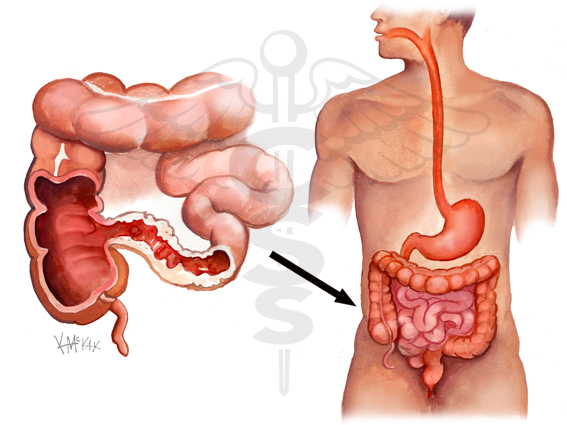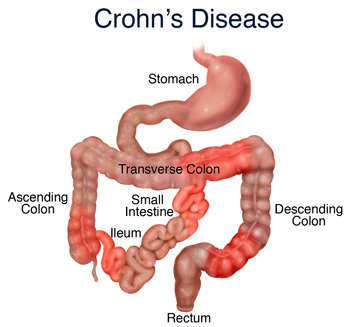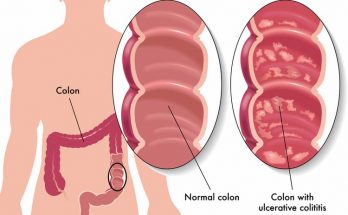One of the major and most debilitating symptoms of Crohn’s Disease is abdominal pain. Crohn’s Disease pain may manifest in more than one way. The quality of Crohn’s Disease pain can range from acute, sharp pains to a dull, achy sensation. The location of Crohn’s Disease pain is typically in the lower right side of the abdomen; where the small intestine and large intestine meet.
The joint between the intestines is called the terminal ileum. The terminal ileum spans the abdomen just above the belt line.
The parts of the digestive tract that are affected by Crohn’s Disease determine the type of Crohn’s Disease pain experienced. Pain in the terminal ileum may be sharp. Pain in the colon may be a duller cramp.
There are various types of treatment for Crohn’s Disease pain, and the type of treatment employed depends largely on the severity of the pain and the stage of the disease. For short term treatment of painful inflammation, doctors may prescribe steroids. Steroids are drugs that lessen inflammation. However, steroids are not usually used long term because they cause serious side effects. Taken long term, steroids can create diabetes, glaucoma, and high blood pressure, in addition to other conditions. If the Crohn’s Disease is more serious, a long term, safer treatment may be employed.
One form of long term treatment for Crohn’s Disease pain is a class of drugs called salycicates. This is a common type of drug. Aspirin is a salycicate. Salycicates help to fight inflammation and relieve pain, and are also used for diseases like rheumatoid arthritis. Types of salycicates used to treat Crohn’s Disease pain are sulfasalazine, mesalamine, olsalazine, or balsalazide.
Salycicates also have the effect of reducing fever, another symptom of Crohn’s Disease. Salycicates are useful for as long as they are ingested; they are not a cure, and their effects do not last beyond the time when they are actively taken.
Crohn’s Disease pain may also be associated with the chronic diarrhea the disease often causes. Some patients feel as though the pain is temporarily relieved, to varying extents, after a bowel movement. Treatments to address the muscle cramping associated with Crohn’s related diarrhea may be administered.
Other drugs may be used to treat Crohn’s Disease pain on a case-by-case basis, depending on the specific symptoms and needs of the patient such as a immunomodulating drug, a type of medicine that suppresses or regulates the immune system. This stops the immune system from mistakenly attacking the digestive tract, which is thought to be a cause of Crohn’s Disease. If the presence of bacterial infection is detected, antibiotics may be used to help eliminate the infection, thereby lessening painful inflammation.


